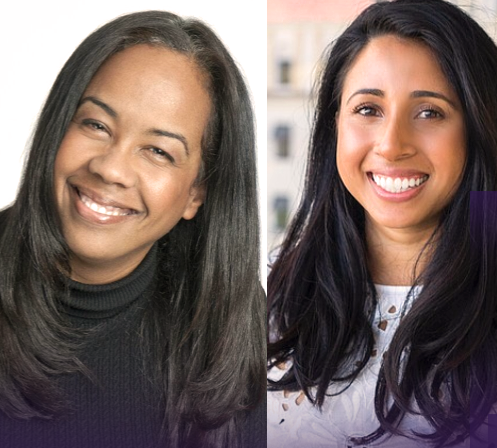How has your company reacted to the Black Lives Matter movement? At what point did your company realize that they needed to make a shift, and what have been the shifts so far?
Alicin Williamson: Endeavor, like most U.S.-based companies, felt the impact of the national movement to its core. Our employees were tremendously impacted by the events that led up to the marches and we wanted to make sure all knew we were there for them. While there had been a discussion about diversity and inclusion well before the most recent incidents, the actual understanding of why the work was so critical came front and center. The Black Lives Matter movement has been around since Ferguson, but most people did not feel as connected with the movement as they did in June of this year. Because there was already a plan for inclusion that was going to be rolled out along with a series of diversity efforts, the biggest shift was the slowing down of the initiatives and focusing on education. It became clear that there needed to be an understanding of how this nation got here and what needs to be understood to not continue to end up in the same place. From the top down, people read White Fragility, thousands of our employees joined a virtual discussion with Van Jones, Sara Sidner, Robert Raben, and Jelani Cobb to discuss anti-racism and allyship. Pods and groups were created across the company to discuss what anti-racism meant to them and their work. Voices of people who had felt silenced were raised and heard.
Ensuring a company has clear processes and policies, has transparent communication, and embraces diverse voices leads to an inclusive culture.
What does it mean to be “diverse” and “inclusive”?
Williamson: A diverse working environment has a range of people, ideas, and styles. “Diversity” is the “what” and “diverse” is not a person. There is not a “diverse” candidate but rather a diverse slate of candidates (serious pet peeve). Inclusion is when that range of people, ideas, and styles are embraced and understood to be important to the company. Ensuring a company has clear processes and policies, has transparent communication, and embraces diverse voices leads to an inclusive culture. Without inclusion, the diversity becomes more akin to assimilation as opposed to evolution and innovation.
How is the entertainment industry changing its storytelling when it comes to marginalized groups? Within your own company, how would you describe storytelling pre- and post-BLM?
Romola Ratnam: While our company has had a longstanding commitment to diverse storytelling and representation, our work in this space has been accelerated through our partnership with Color of Change and the #ChangeHollywood initiative. In the past six months, in line with our commitment to becoming an antiracist company, we’ve implemented four key changes as it relates to storytelling:
- Endeavor Content, Endeavor’s content and distribution studio, internally released an interactive Content Scorecard that provides analytics into the ethnic, gender, sexual orientation, and disability makeup of a project’s creative talent. The scorecard allows decision makers to track these metrics and make informed decisions on how to continue to support underrepresented content and content creators.
- Our talent agency, WME, implemented an all-new script coverage training program, which will now include a module covering the potential impacts of storytelling on culture, and resources for script readers to flag potentially problematic content. The program ensures employees have outlets to discuss potentially insensitive material and provides opportunities for clients to receive informed guidance on content that relates to topics including race, gender identity, crime, sexual orientation, and law enforcement.
- We’ve created a protocol for Color of Change to actively engage with Endeavor Content to read and provide analysis on scripts in development relating to the portrayal of underrepresented or marginalized communities. As part of this partnership, Color of Change is already consulting on five projects that depict law enforcement and the justice system.
- Endeavor Content has developed a set of anti-racist values for the greenlighting of projects, and will be conducting an independent racial justice audit of a set of representative content. The audit will identify both problematic and promising patterns of representation and storytelling, and provide actionable recommendations for improving content development with respect to racial justice impact.
What is still needed for the entertainment industry to become more diverse in the way it is managed internally?
Ratnam: In order for entertainment to become diverse in how it’s managed internally, there needs to be tailored solutions for the multiple populations that make up the industry. When it comes to diversity for a piece of content, for example, we must look at five different areas.
- Greenlighting power: Who has the power to say that a piece of content will be made? Do those people value and understand the market for less represented voices? Is it a priority for them to ensure that projects have a diverse set of people shaping the content such as writers, directors, and producers?
- Content creators: Who has created the content? Do the creators also represent the communities they’re creating content about?
- On-screen representation: Who is shown on screen, and equally important, who has speaking roles? Do the people shown on screen actually match the demographics of the people in our cities and country?
- Below-the-line staffing: Who made up the crew of a project? Is there diversity among positions such as lighting, sound, and production?
- Representation and marketing: From agents, to managers, publicists, and marketers, there are numerous people in decision-making roles that influence the outcome of a project and how it’s represented to the world.
In order for diversity in each of these areas to thrive, we need to invest in talent and careers. This includes developing strong pipelines, eliminating barriers (such as unpaid internships and four-year degree requirements) and proactively recruiting people from diverse backgrounds and geographies into careers at all stages of the content-creation process. It also includes setting measures where investors, top talent, and studios demand diversity across productions. The inclusion rider is an example of a framework that can be adopted to measure crew and on-screen diversity. This challenge will also require public policy solutions such as California’s Diversity Tax Credit, which has the potential to create a system that financially rewards and incentivizes diversity.
What is still needed for the entertainment industry to become more diverse in the kinds of entertainment it puts out?
Ratnam: More perspectives—not just in the content-creation process but among those with decision-making power. We need more people with power to understand the changing markets and diverse consumer demands across the country and world. There are countless niche markets that are underserved when it comes to premium U.S.-based content, a fact that was demonstrated to the industry by the rise of industry titans such as Tyler Perry, or even first of their kind entertainers such as Lilly Singh.
What are common mistakes companies make when it comes to creating a diversity or inclusion role?
Williamson: A common mistake companies often make when creating a diversity role is that it is organized around creating programs and bringing people who are underrepresented through the doors. However, when thought of in the best way, the role should be seen as one of innovation and culture building. I’m always bemused when the most innovative, culturally relevant companies use a 1970s diversity playbook. Be innovative; be disruptive. The reason the role is needed is because the work of shifting culture is needed. If set up for success, the role provides tools to help businesses reimagine opportunities, stakeholders, how and what voices are heard in meetings, and who can thrive through a diversity and inclusion lens. It is often mistaken as a role that once it is filled everyone gets to get on with their “day job” and let someone handle diversity. When thinking of adding this role, it is important that companies go through the exercise of imagining what it means if true diversity, equity, and inclusion were to happen, what might need to change, and whether they are truly ready.

Alicin Williamson and Romola Ratnam will be speaking at The XX Project’s Power Breakfast Panel, “Making Diversity Actionable.”














































